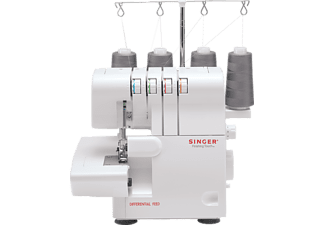BUYING A SEWING MACHINE
- Susann Werner

- Dec 30, 2022
- 2 min read
Tips and must haves when buying a regular sewing machine.

Before you buy a sewing machine,
it is worth asking around among friends and family to check if anyone has a sewing machine to try out/borrow/sell. Older sewing machines from grandma, grandpa & co. are often more sturdy and usually have a stronger engine than regular sewing machines nowadays. If you decide to invest in a new sewing machine, it makes sense to try out different sewing machines in a shop, sewing course or at a friend´s place before you buy eventually buy. Regular sewing machines are totally sufficient in terms of their range of functions for getting started with sewing, as they process non-stretchable materials well and have all the necessary functions to process a variety of seams and sewing projects. Price wise sewing machines are available starting at €100 at discounters. Theywill serve their purpose for sewing beginners, but usually come with a higher level of noise, less powerful engine and fewer functions. If sewing is planned to become a long-term hobby of yours, then I recommend the Brother Innovis-10a sewing machine (~300€), which I also use in my classes for children and adults.
Which functions I consider to be important when buying a new sewing machine:
Utility stitches (essential: straight stitch, zigzag stitch | optional: stretch stitch, imitation overlock stitch, buttonhole stitch, button sewing function)
Decorative stitches (hearts, stars, letters, etc.) are not essential and only contribute in making the sewing machine more prone to failure and are usually not used anyway
Adjustable sewing speed (especially helpful for children, as it can be difficult to regulate the speed with the sewing pedal alone)
Integrated LED sewing light, so that there is no need for an additional table lamp
Adjustable stitch length & stitch width
Explanation/image printed on the sewing machine for the correct threading of upper thread, lower thread & bobbin
Adjustable needle stop position, so you can determine whether the needle stays over or in the fabric when sewing stops
Adjustable thread tension for the upper thread so that the stitch pattern can be adapted to different types of fabric if necessary
Sewing Machine Accessories (zipper foot, screwdriver, dust cover, spare bobbins, spare needles) easy-to-understand and illustrated operating instructions
Adjustable sewing foot pressure (optional and useful for knitwear, but only available on higher-priced machines)
Overlock machine

In addition to sewing machines, there are also so-called overlock machines, which differ visually from regular sewing machines in a way that they use 3-4 large sewing threads (cones) and are particularly suitable for processing stretchy materials such as jersey. With an overlock sewing machine, only edges (e.g. the inside seams of t-shirts) are processed or trimmed (by an automatic knife) and connected at the same time. For, among other things, sewing on pockets, sewing in zippers and hemming edges, you still need a regular sewing machine. Overlock machines are therefore suitable as a second machine for ambitious hobby sewers who often process stretchy materials such as jersey.



Comments